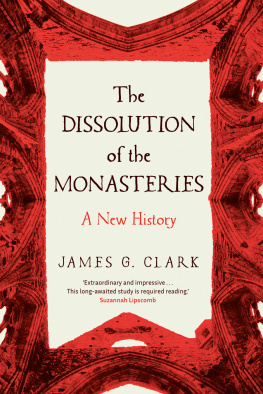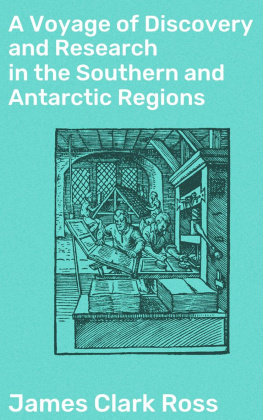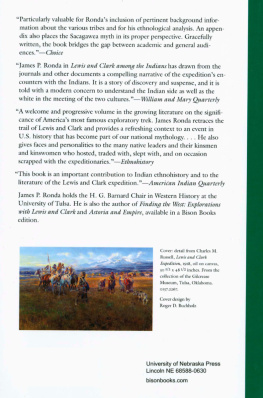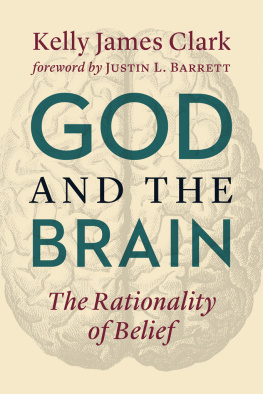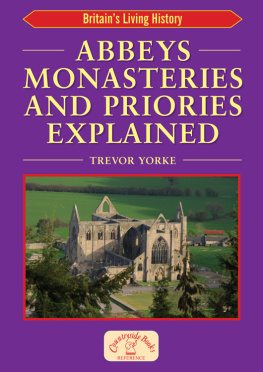ACKNOWLEDGEMENTS
This has been a passage through monastic and mendicant England which the Cromwellian commissioners might have recognised, except perhaps for its speed. Like their own experience, where it has brought results, it has been due to the ready guidance and willing support of those expert in the ways and means of the medieval religious houses, the later medieval church, the Tudor regime and the archives and archaeology they have left behind. I am especially grateful to John Allan, Des Atkinson, Virginia Bainbridge, Paul Binski, Julia Boffey, Tracy Borman, Clive Burgess, Janet Burton, Jon Cannon, Michael Carter, Jeremy Catto, Colman OClabaigh, Wendy Clarke, Martin Crampin, Peter Cunich, Stephen Fenn, Richard Fisher, Henry French, Roberta Gilchrist, Vincent Gillespie, Steven Gunn, Nick Holder, Jonathan Hughes, Ronald Hutton, John Jenkins, Eddie Jones, Charles Knighton, Julian Luxford, Jesse Lynch, Harriet Lyon, Veronica OMara, Ellie March, Dave Martin, Oswald McBride, Diarmaid MacCulloch, Julia Merritt, Ian Mortimer, Nicholas Orme, Matthew Payne, Rebecca Philips, Sue Powell, John Powlesland, Stephen Rippon, David Rundle, Henry Summerson, Benjamin Thompson, David Thornton and Tony Trowles. I am grateful to the editorial team at Yale University Press, especially Marika Lysandrou and Richard Mason, for their generous assistance. Sincere thanks are also due to Heather McCallum for her patient forbearance. I owe most of all to those who have shared in the journeys every turn: my parents, who unwittingly began it when they first unfolded the past time present in so many places; Henry, whose endurance was a challenge to chronology itself; Eleanor and Cecily, who alone among their generation will carry with them the capacity to distinguish canon from monk; and, above all, Katherine, as indomitable as her namesake, the Lady of Godstow. The best of this is theirs.
Cruwys Morchard, February 2020
INTRODUCTION
T he week before Easter 1540 saw the end of almost a millennium of monastic life in mainland England. In the last days of Lent, the Augustinian abbey of the Holy Cross at Waltham (Essex) was surrendered into the hands of William Petre, proctor of the Vicegerent in Spirituals, Thomas Cromwell. Abbot Robert Fuller and his seventeen brother canons entered their chapter house for the final time, perhaps following their Morning Mass, the mid-point of the monasterys daily routine. There they heard Petre read out the deed that would formalise their surrender to the Crown. It opened with the common formula that their act was undertaken with their whole assent, consent and free will (unanimi assensu et consensu ac spontanea voluntatae nostris); then a further twelve lines were filled with details of what they were about to give up: church, cloister, curtilage, courts and precinct, and lordships, manors, farms, tenements, granges, meadow, marsh, pasture, woodland, warren, furze and fishing waters extending over eighteen counties. Now, in descending order of seniority, they stepped forward to sign their name in the documents left-hand margin. Their signatures were well done, the lettering large; the last two of them, the juniors, Robert Hulle and Edmund Freke, had to fit their names onto the vellums folded lower lip.
On the last day of the same week, Richard Rich, the Chancellor of the Court of Augmentations the office created to take in the revenue from the religious houses received the kings commission, written out on workaday parchment, to proceed to take the surrender of the monastic communities that were the custodians of the cathedral churches at Rochester and Canterbury. The deeds themselves have been lost and so the day(s) it was done cannot be known for certain, although it may have been before the end of the following week as the Easter octave came to a close.
There was no small resonance to the last acts of the religious orders being witnessed at Waltham, Rochester and Canterbury. Waltham was a royal foundation, and the church claimed to hold in its keeping the mortal remains of the last king of England, Harold Godwinson (d. 14 October 1066). Its Augustinian tradition had been the mainstay of regular religious communities in medieval England, that is to say, those foundations for men and women who committed to live communally under a Christian rule (Latin, regula). Houses with these customs outnumbered all others by almost 40 per cent.

